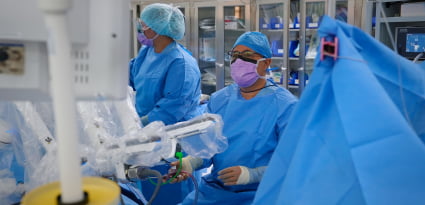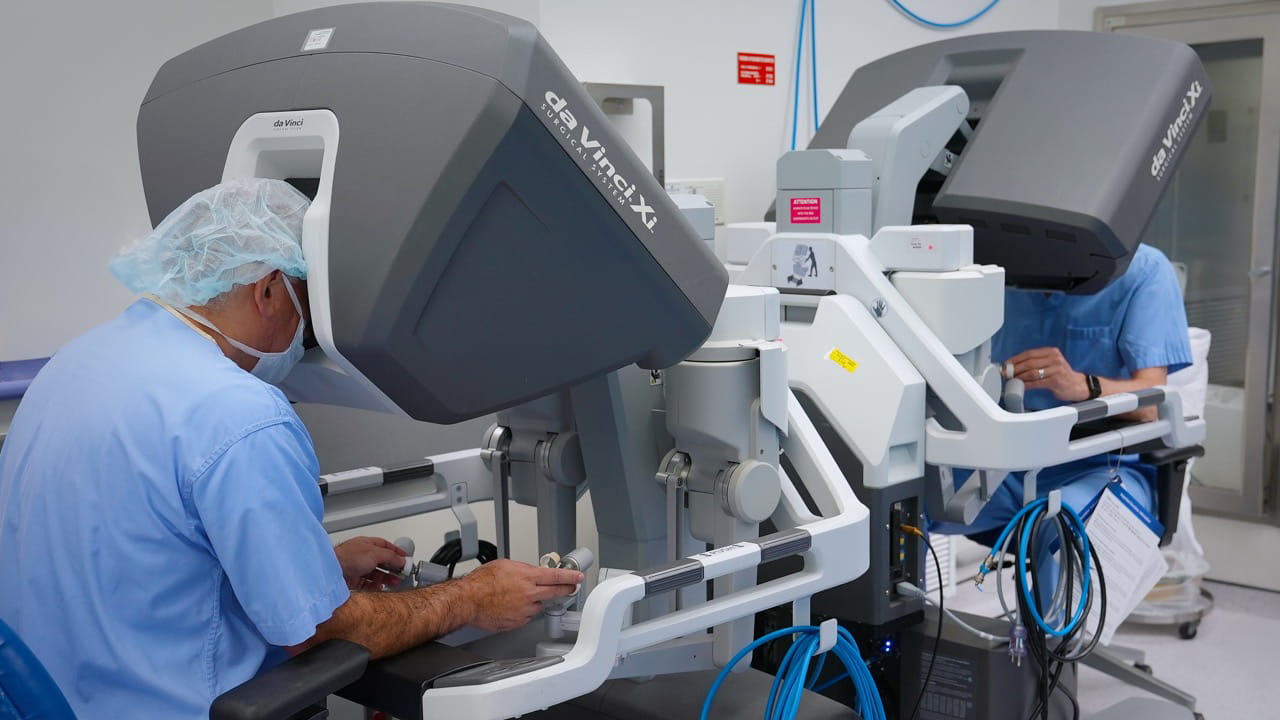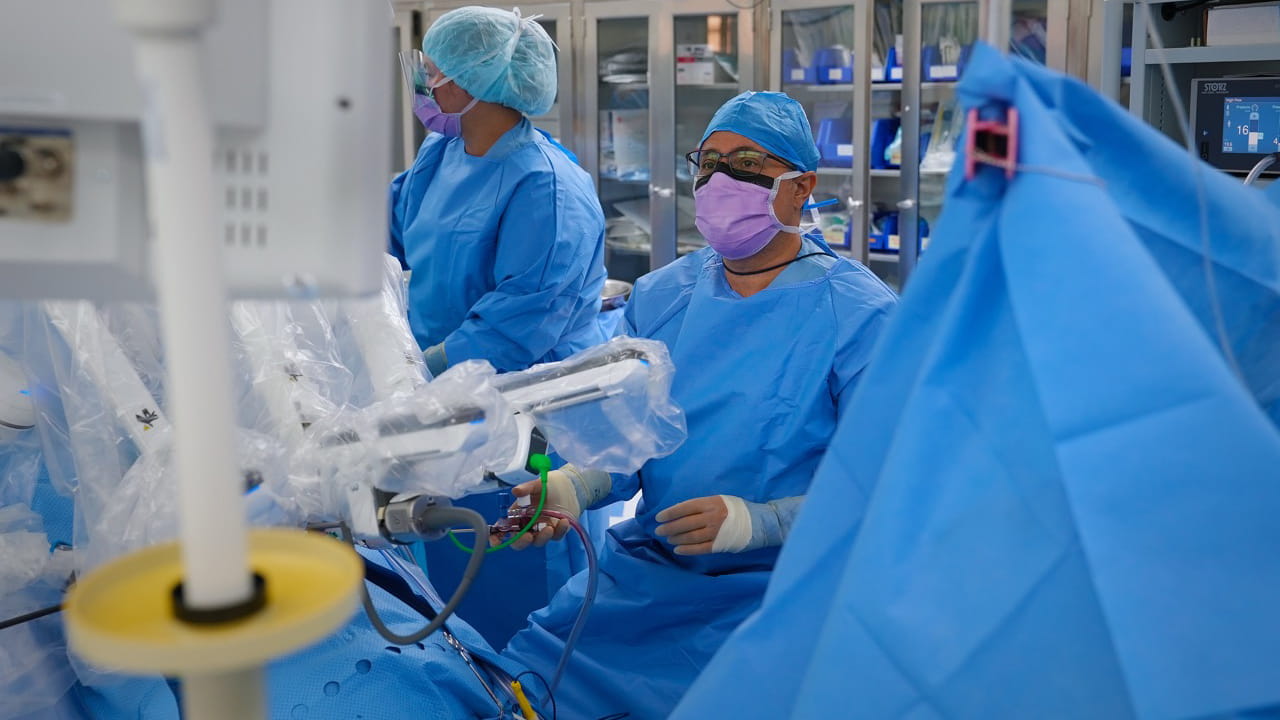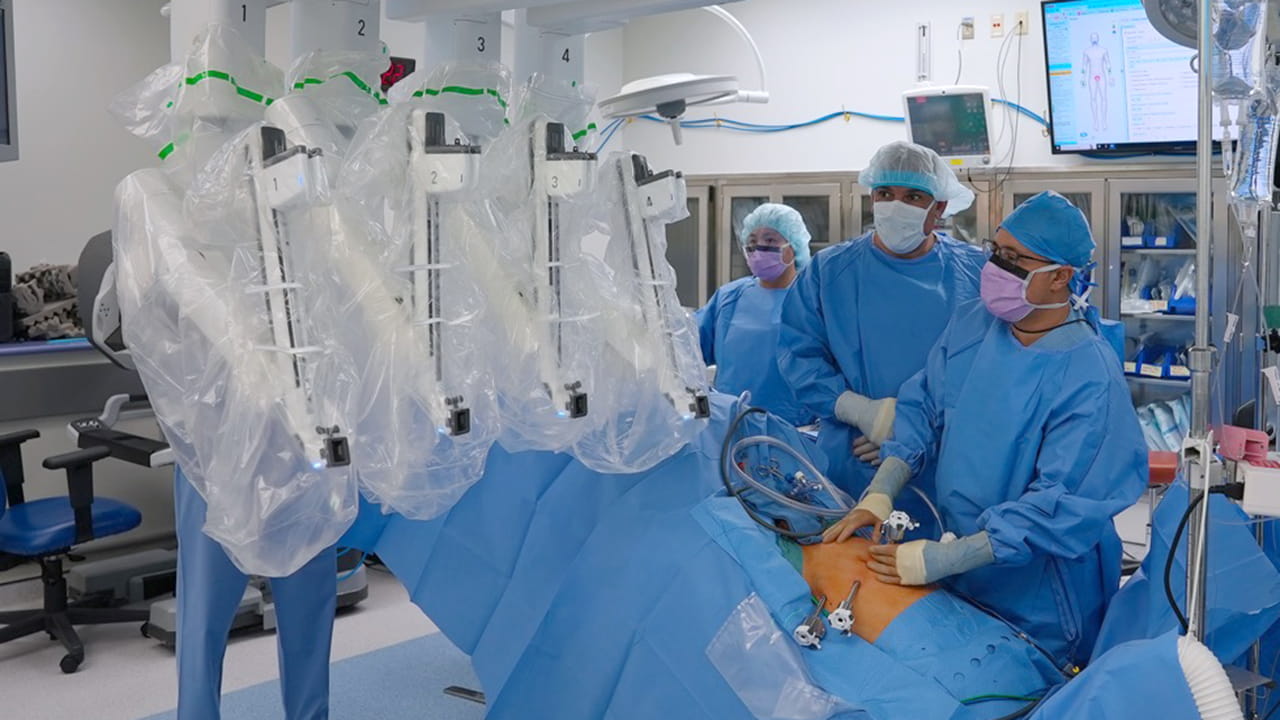What happens during surgery with da Vinci?
After arriving in the operating room, the patient is placed under general anesthesia, then positioned in a manner best suited to the planned surgery. The surgical team then marks the access points, or “ports,” through which small tubes are inserted into the patient’s body. The “docking” process then takes place, whereby the robot is moved to the operating table and its arms are attached to the access points.
The arms of the da Vinci robot control the cameras and surgical tools needed for the procedure, which are inserted through the ports into the patient’s body. The robotic arms themselves are controlled by the surgeons, who sit at a console that gives them a 3D view from inside the patient’s body with 10 times magnification. The surgeon uses a joystick and other controls on the console to delicately move the robot’s arms, which can perform complex movements that would be impossible if done by hand.
“The depth perception provided by the da Vinci camera is incredible,” Dr. Ahmad says. “It’s as if you’re right there inside the patient’s body. The robot also allows you to make the tiniest incisions that get you into deep, difficult spaces. The robotic arms have a 360-degree plane of movement, which is far more dexterous than a surgeon’s wrist.
“Of course, the robot is the facilitator for the surgeon — it’s not doing the operation itself. Every movement of the robot is carefully controlled by the surgeon, and the robot is always under the complete control of the surgeon.
“In my specialty, which is colorectal surgery, I’m able to dissect tumors much more precisely inside the patient’s body. The accuracy of da Vinci also means there’s less risk of disrupting nerves, which reduces the risk of complications.”
The Da Vinci robot is made by Intuitive Surgical, an American biotechnology company. According to Intuitive, more than 14 million procedures have been performed worldwide using da Vinci robots.
Pushing the boundaries of robotic surgery excellence
Robotic surgery experts from JHM in Baltimore frequently visit JHAH on rotation. One such expert is Dr. Vincent Obias, a world-renowned robotic colorectal surgeon who is Chief of Colorectal Surgery in the National Capital Region at JHM. Another is Dr. Hien Nguyen, Director of the Comprehensive Hernia Center at JHM, who is an expert in single-incision, robotic, and laparoscopic bariatric surgery.
Knowledge transfer assessment programs run in collaboration with JHM have provided rigorous training and intensive hands-on experience for JHAH’s robotic surgeons. A recent intensive training program led to a 22% fall in average operating time while boosting other performance metrics by 36%.
JHAH’s robotic surgeons are also benchmarked against performance data collected from da Vinci robots across the world. Many of JHAH’s robotic surgeons are operating in the top 10% for operating time and other metrics, the data suggests.
Last year, Intuitive, the maker of da Vinci, designated JHAH a Case Observation Center. This meant that JHAH was permitted to conduct training on the da Vinci platform across the Middle East, and clinicians across the region now visit JHAH to observe robot-assisted surgery.




